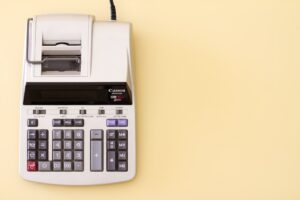Using Volume Indicators to Make Informed Decisions in Forex Trading
Forex trading can be a highly rewarding endeavor, but it also comes with its fair share of risks. Traders are constantly on the lookout for tools and indicators that can help them make more informed decisions and improve their chances of success. One such tool is volume indicators.
Volume indicators, as the name suggests, provide insights into the trading volume of a particular currency pair. They help traders understand the strength and momentum behind price movements, which can be crucial in making informed trading decisions.
In forex trading, volume refers to the number of contracts or lots traded within a specified time period. Unlike the stock market, where volume is readily available, forex volume data is decentralized and not readily accessible. However, volume indicators use various techniques to estimate trading volume and provide valuable insights to traders.
One commonly used volume indicator is the On-Balance Volume (OBV). The OBV indicator measures the cumulative buying and selling pressure by adding or subtracting the volume of each trading period, depending on whether the closing price is higher or lower than the previous period. This indicator is particularly useful in identifying trends and potential trend reversals.
For example, if the OBV line is moving in the same direction as the price, it indicates confirmation of the trend. On the other hand, if the price is moving in one direction, but the OBV line is moving in the opposite direction, it suggests a potential trend reversal or weakness in the current trend.
Another popular volume indicator is the Volume Weighted Average Price (VWAP). The VWAP is calculated by multiplying the volume of each trade by the price and dividing the sum by the total volume. This indicator is commonly used by institutional traders to gauge the average price at which a particular currency pair has traded over a given period.
The VWAP is particularly useful in identifying significant price levels and potential support or resistance zones. Traders often look for price action around the VWAP to determine whether a currency pair is overbought or oversold. If the price consistently stays above the VWAP, it suggests that buyers are in control, while prices below the VWAP indicate selling pressure.
It’s important to note that volume indicators are not foolproof and should not be used in isolation. They should be used in conjunction with other technical analysis tools to validate trading signals and increase the probability of successful trades.
For example, volume indicators can be combined with trend indicators, such as moving averages, to confirm the strength of a trend. If the price is trending upwards, and the volume is increasing, it suggests a strong buying pressure and validates the bullish trend.
Similarly, volume indicators can be used in conjunction with oscillators, such as the Relative Strength Index (RSI), to identify potential overbought or oversold conditions. If the price is reaching new highs, but the volume is decreasing, it suggests a lack of buying interest and a potential reversal in the trend.
In conclusion, volume indicators can be powerful tools in forex trading, providing valuable insights into market dynamics and helping traders make more informed decisions. Whether it’s identifying trends, confirming price levels, or validating trading signals, volume indicators can enhance a trader’s understanding of the market and improve their chances of success. However, it’s important to remember that volume indicators should not be used in isolation and should be combined with other technical analysis tools for a comprehensive trading strategy.





